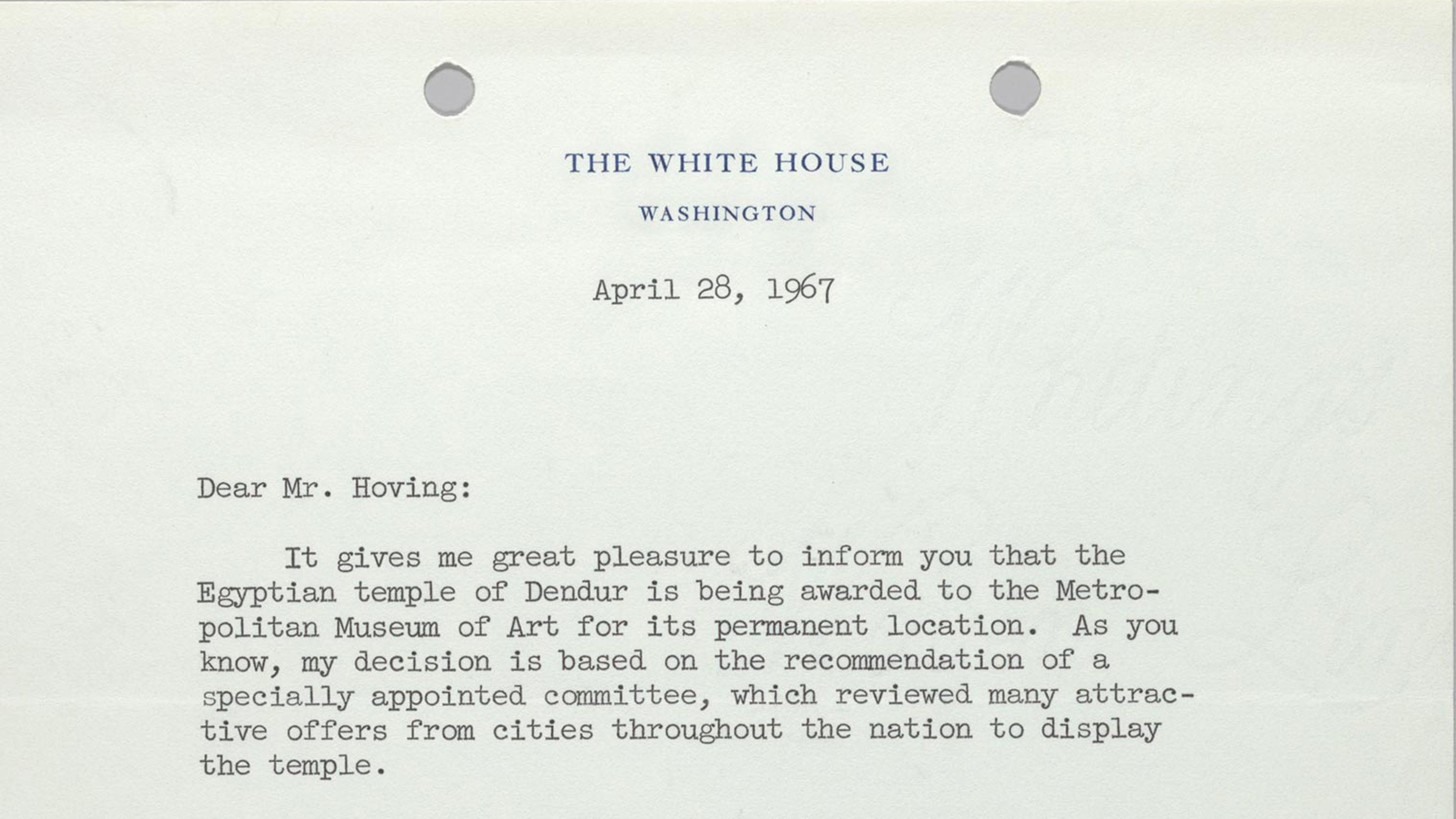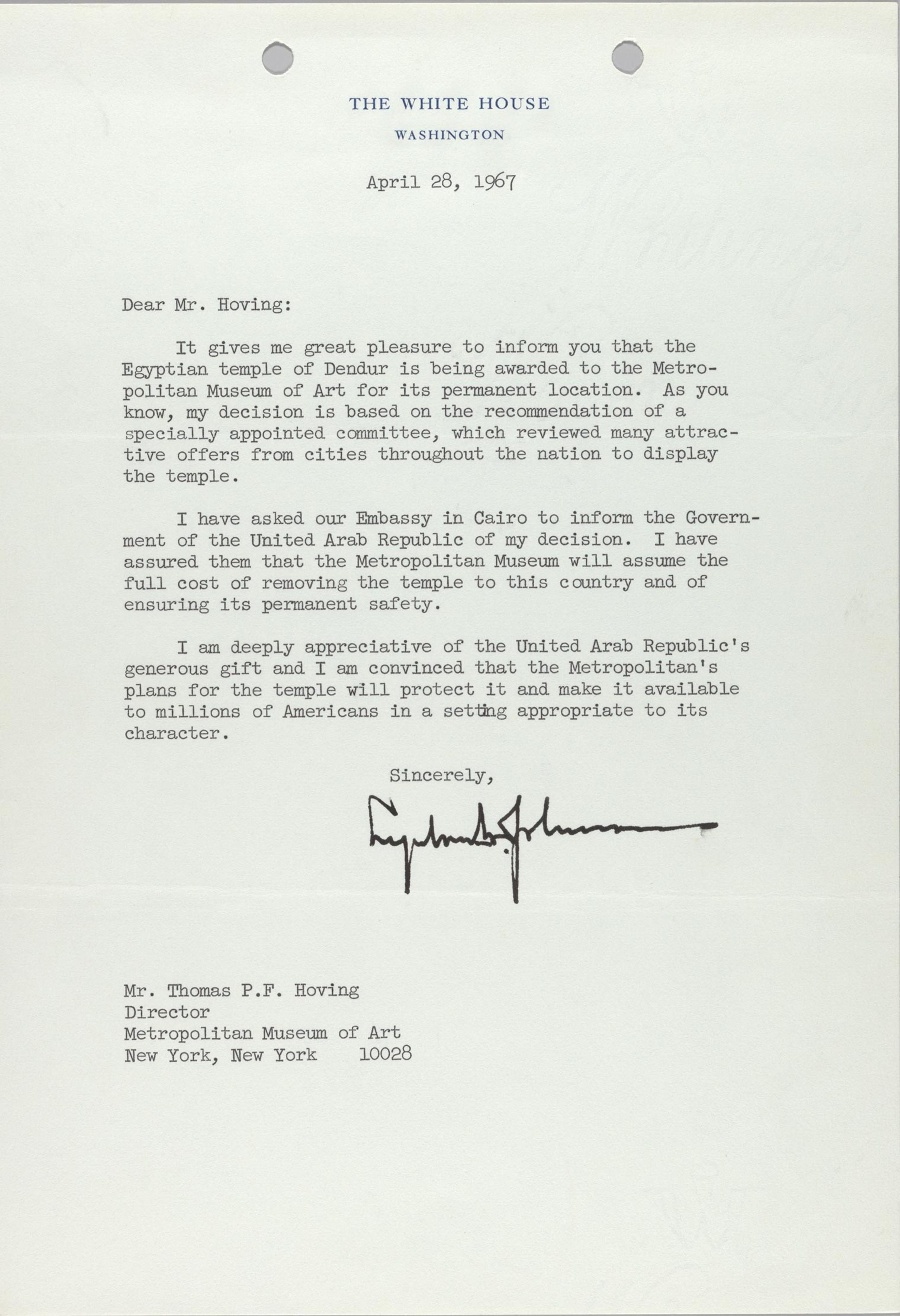
Letter from President Lyndon B. Johnson awarding the Temple of Dendur to The Met
Fifty years ago, on April 28, 1967, President Lyndon B. Johnson signed a letter that officially awarded the Temple of Dendur to The Metropolitan Museum of Art. More than a decade later, on September 27, 1978, the Temple of Dendur opened to the public, allowing generations of museumgoers the opportunity to enjoy this monument in its new setting as an example of a small but traditional Egyptian temple.
The Origins of the Temple
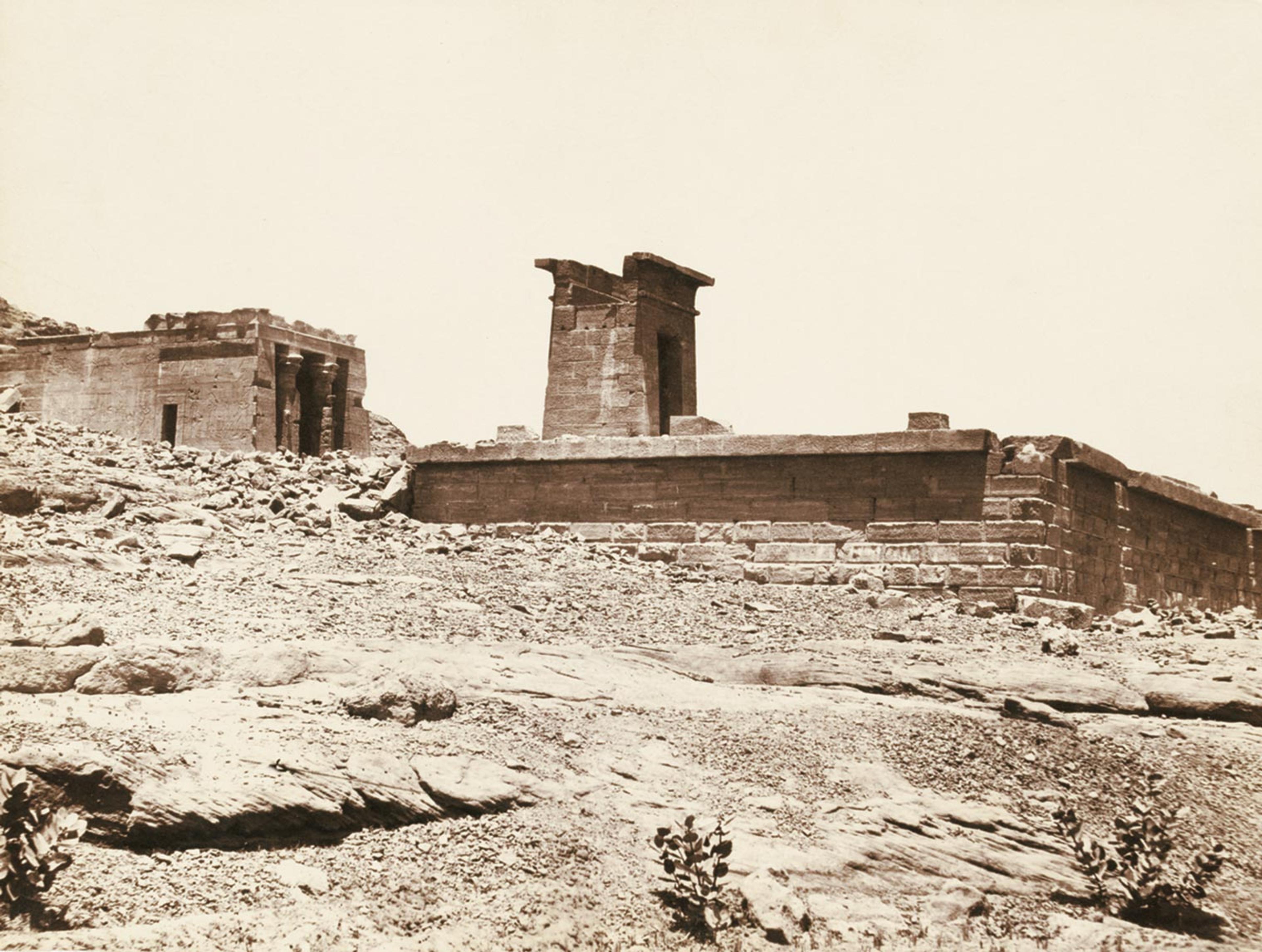
The Temple of Dendur in situ, ca. 1865–1885. Photo by Antonio Beato
Completed in 10 B.C., the Temple of Dendur was commissioned by Caesar Augustus shortly after he became emperor of Rome. He chose this location in Lower Nubia along the west bank of the Nile (south of modern-day Aswan) for his new temple because the site was already sacred to the local Nubians. Dendur housed a small hillside shrine that probably focused on the worship of two brothers, Pedesi and Pihor, sons of a local Nubian ruler.
During the period in which it was built (15–10 B.C.), Dendur was part of a region under the religious authority of the large temple to Isis at Philae. By building a temple at Dendur dedicated to both the great goddess Isis and these two brothers, Augustus encouraged the local Nubian population to view Roman rule favorably.
Monuments in Crisis: The Aswan High Dam and Lake Nasser
In order to better contain the annual flooding of the Nile that affected the region's crop production, the construction of the Aswan High Dam began in 1960, and by 1970 the formation of Lake Nasser was complete. This vast lake covers more than 2,000 square miles, including the ancient site of Dendur. If not for UNESCO's ambitious International Campaign to Save the Monuments of Nubia, the Temple of Dendur would have been submerged forever beneath Lake Nasser. However, in the early 1960s, fifty countries around the world came together to contribute expertise, equipment, and funds—both governmental and private—to record settlements, cemeteries, fortresses, churches, and shrines, as well as to move and reinstall on safe ground twenty-two temples. In 1965, to recognize the United States' substantial contribution to this campaign, Egypt gifted Dendur's temple and gateway to the U.S.
A commission was appointed in 1967 by the National Foundation on the Arts and the Humanities to review applications from institutions and local governments interested in displaying the Temple of Dendur. Met Director Thomas Hoving and Curator of Egyptian Art Henry G. Fischer presented a proposal to the commission, making a strong case for The Met's readiness to care for the temple. The presentation was successful and Dendur was awarded to the Museum a few weeks later. As part of their presentation, Hoving and Fischer promised to make the temple available to visitors, display it in a manner that enhanced its architectural presence—in both daytime and nighttime settings—inside a gallery that protected the temple and housed it alongside one of the world's finest collections of Egyptian art.
From Egypt to The Met
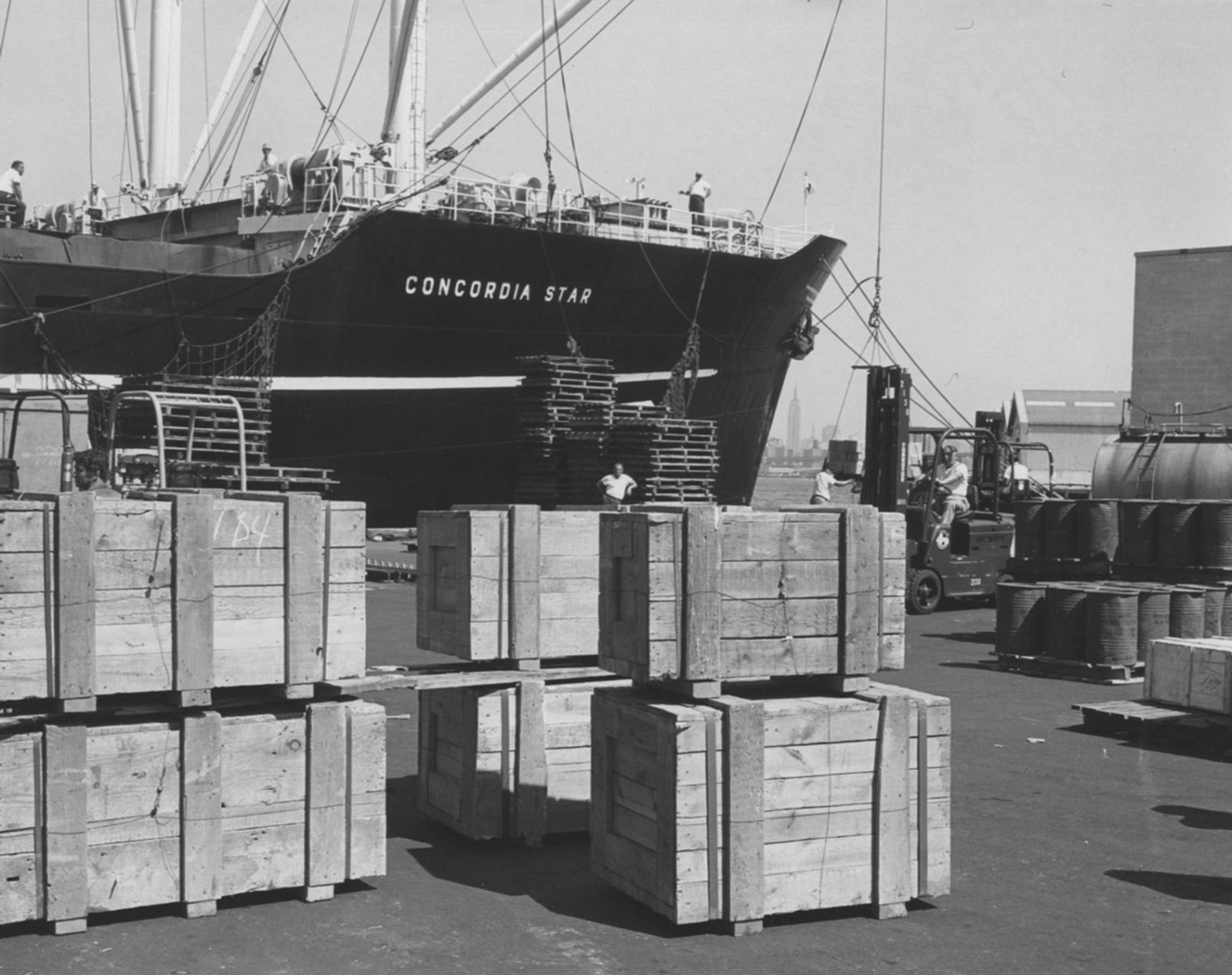
Crates being offloaded from the freighter S.S. Concordia Star
Six years after it was dismantled, Fischer traveled to Egypt to oversee the packing and shipping of the temple's blocks. After the freighter S.S. Concordia Star made its way across the Atlantic and docked in New York, the crates were delivered on August 20, 1968, to an air structure on what was then the Museum's south parking lot (an area now occupied by the Carroll and Milton Petrie European Sculpture Court) for storage.
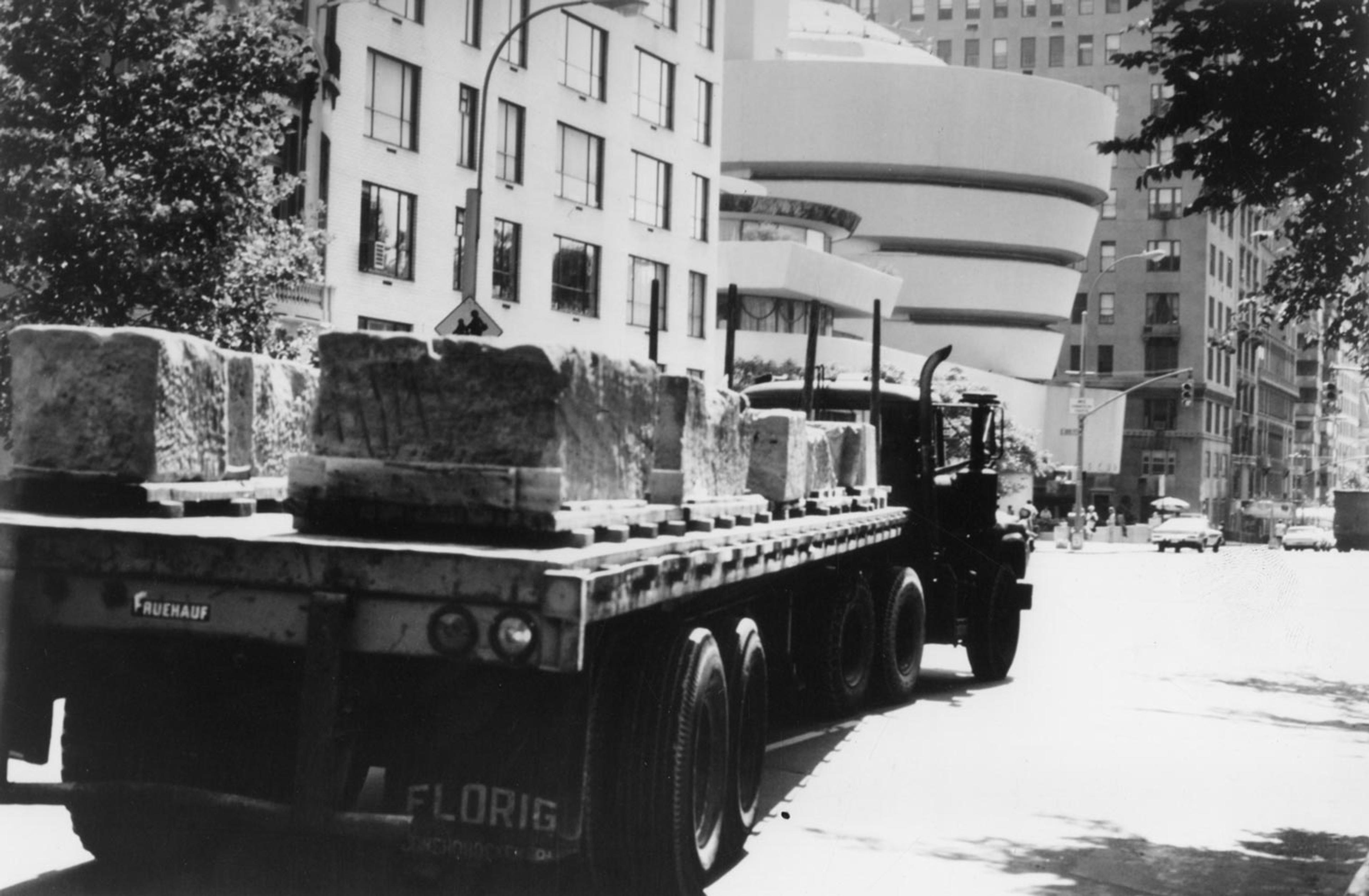
The temple's blocks as they were transported south on Fifth Avenue from the air structure to the newly renovated loading dock
After The Met's loading dock was redesigned, the blocks were then transferred to that protected area to be conserved and organized. Subsequently the blocks were moved upstairs to Gallery 131, which was still under construction, to be reinstalled again as architecture. After the stonemasons and conservators reassembled the temple and its gateway, additional protection was added to the structures while the rest of the wing was completed.
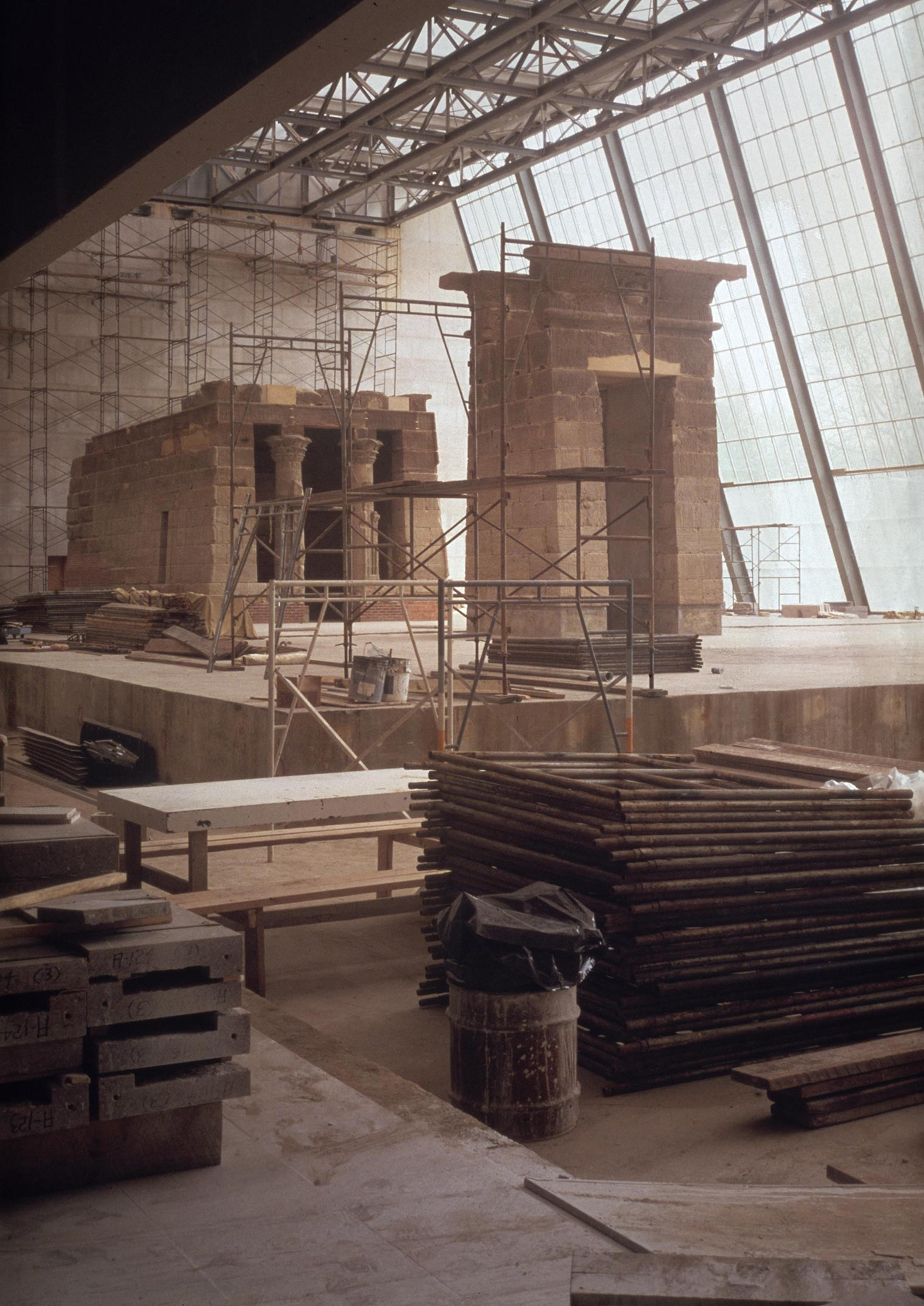
Scaffolding in front of the Temple of Dendur during the final phase of the construction of Gallery 131
Architects Kevin Roche John Dinkeloo and Associates accounted for the monumentality of the Temple of Dendur by designing a space that evokes the temple's original location on a natural rocky hillside near the Nile River and by presenting the temple facing east, where it stands under the bright light of a wall made entirely of windows. Fifty years later, this generous gift from Egypt still serves as a symbol of the Museum's continued mission to participate in the exploration of this great ancient civilization and to assist in preserving its rich past.
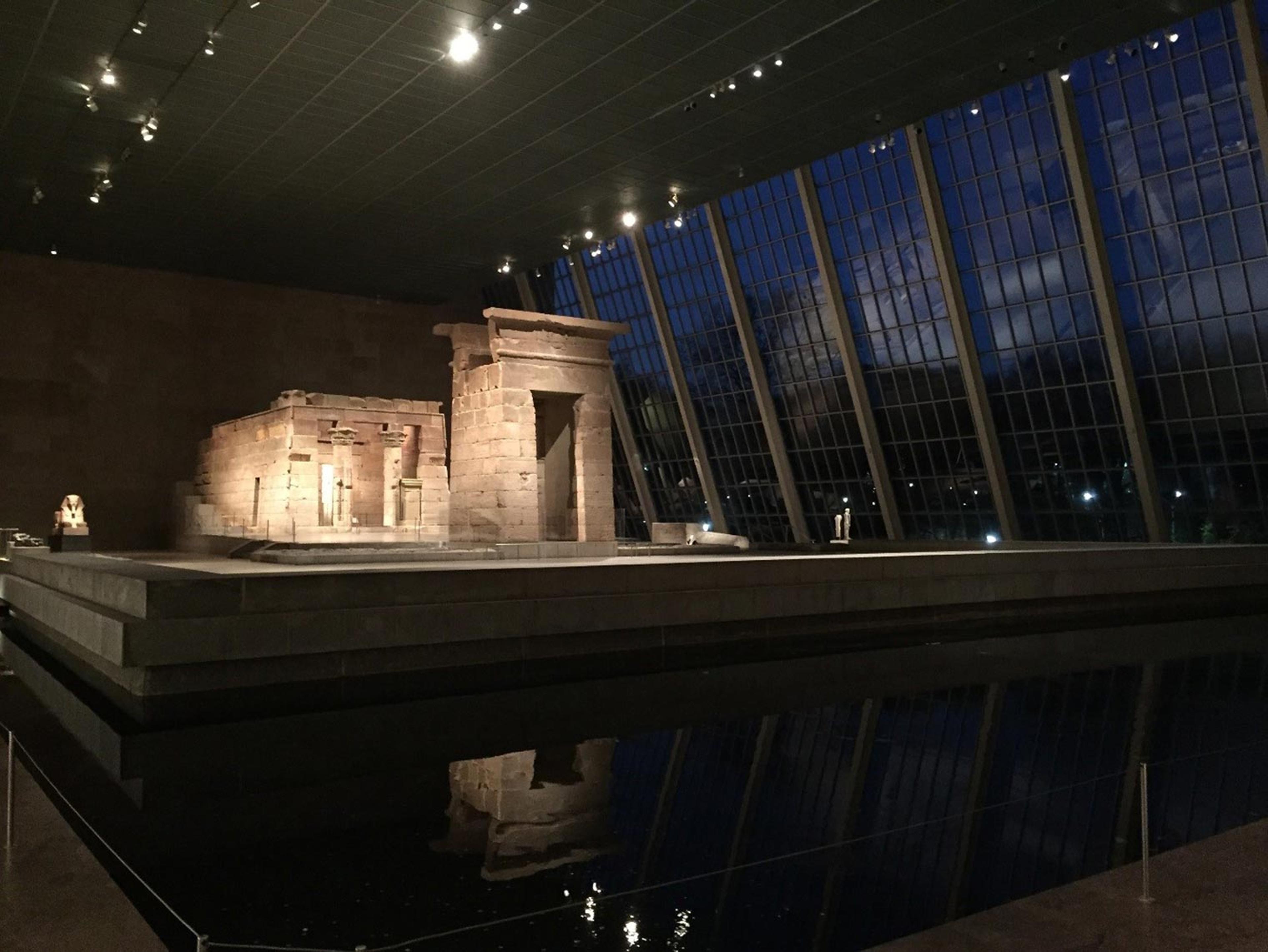
The Temple of Dendur at night
